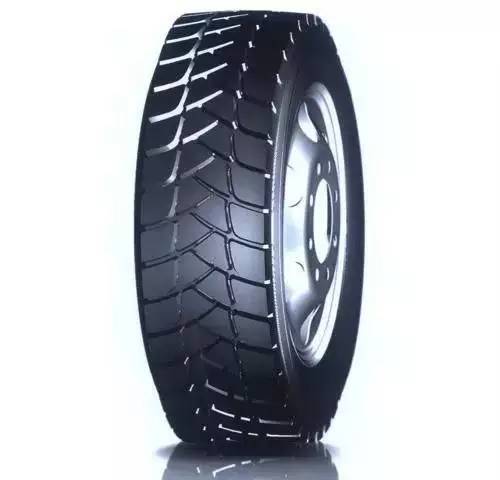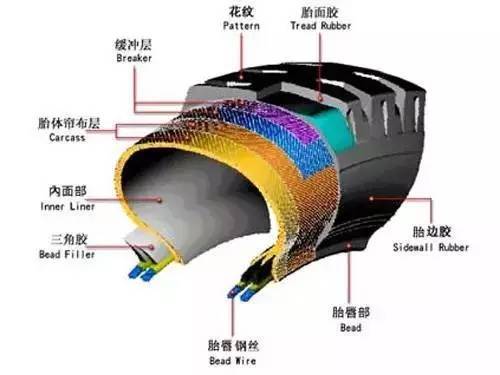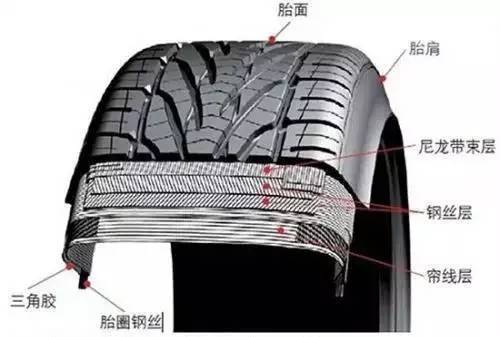How much do you know about the tires that your car uses everyday? To know how much you know, go and talk about the advantages and disadvantages of all-steel radial tires. Since the radial tire structure is different from the bias tire, it has superior performance over the bias tire.

01 Long service life
The radial tire has a large tread rigidity and small circumferential deformation, and can use harder rubber as a tread material, so the wear resistance is good. In addition, the ground contact area of ​​the tire is large, the pressure on the ground is small, the load is distributed evenly, and the amount of sliding movement on the road surface is small, making the mileage of the tire 50% longer than the bias tire.
02 Low rolling resistance and fuel savings
Due to the small number of meridian tire plies and the low friction between layers, the rolling resistance is 25% to 30% lower than that of bias tires, which not only improves the dynamic performance of the car, but also improves fuel economy. In actual use, the fuel saving rate can reach 6%--8%, and with the increase of the vehicle speed, the fuel-saving effect is better.
03 Large capacity
The radial arrangement of the radial tire cords can fully utilize the strength of the cords, which is approximately 14% higher than that of bias tires.

04 Good adhesion performance
Due to the good elasticity of the carcass, large ground contact area, less tread slip, and good adhesion performance, it is beneficial to improving the dynamic performance of the car.
05 Good vibration damping performance

The radial tires are softer than the biased tires, have good elasticity, and have good cushioning performance, which can improve the smoothness of the car, ride comfort, and prolong the service life of automobile parts.
06 Low tire temperature, fast heat dissipation
As the number of radial tire plies is small, and the ply is not sheared, the friction is smaller than that of bias tires, and the heat dissipation is quicker and the temperature rise is lower, which is favorable for increasing the vehicle speed.
07 Tread is not easy to puncture, not easy to puncture
The stable layer of the radial tire is very tough, which can reduce the tire's wear by nails etc., which can be roughly reduced by half. Because the strength of the cord can be fully utilized, the tire is less prone to blasting under harsh conditions of use.
The weakness of radial tires is the easy generation of cracks near the tread and the sidewall transition zone and bead, which requires high material and manufacturing technology and high manufacturing costs. However, since radial tires are significantly superior to ordinary bias tires, their application is becoming more and more common.
How do you know how much you know about radial tires? Of course, Xiao Bian believes that whether you know more or less about the tires, it will change your car into a suitable and safe tire.
Cobalt-based alloy powders are commonly used in laser cladding processes due to their excellent wear resistance, high temperature strength, and corrosion resistance. These alloys typically contain varying amounts of cobalt, chromium, tungsten, and nickel, among other elements, to achieve specific properties.
The laser cladding process involves melting the cobalt-based alloy powder using a high-energy laser beam and depositing it onto a substrate to form a protective coating. This coating helps to enhance the surface properties of the substrate, such as hardness, wear resistance, and corrosion resistance.
Some common cobalt-based alloy powders used in laser cladding include:
1. Stellite: This is a well-known cobalt-chromium-tungsten alloy that offers excellent wear and corrosion resistance. It is often used in applications where high temperatures and abrasive environments are present, such as in oil and gas drilling tools, valves, and pump components.
2. Tribaloy: Tribaloy alloys are cobalt-based alloys that contain varying amounts of chromium, molybdenum, and silicon. They are known for their exceptional high-temperature strength and resistance to galling, making them suitable for applications in the aerospace, petrochemical, and power generation industries.
3. Haynes alloys: Haynes alloys are nickel-cobalt-chromium-molybdenum alloys that offer excellent high-temperature strength, oxidation resistance, and corrosion resistance. They are commonly used in applications where extreme heat and corrosive environments are present, such as in gas turbines and chemical processing equipment.
These cobalt-based alloy powders are available in various particle sizes and can be tailored to meet specific application requirements. They can be used with different laser cladding techniques, such as powder-fed laser cladding or blown powder laser cladding, depending on the desired coating thickness and properties.
Overall, cobalt-based alloy powders for laser cladding provide enhanced surface properties and improved performa
Cobalt 12 Alloy Powder,Cobalt 21 Alloy Powder,Cobalt 6 Alloy Powder,Cobalt Laser Cladding Powder
Luoyang Golden Egret Geotools Co., Ltd , https://www.lygoldentool.com